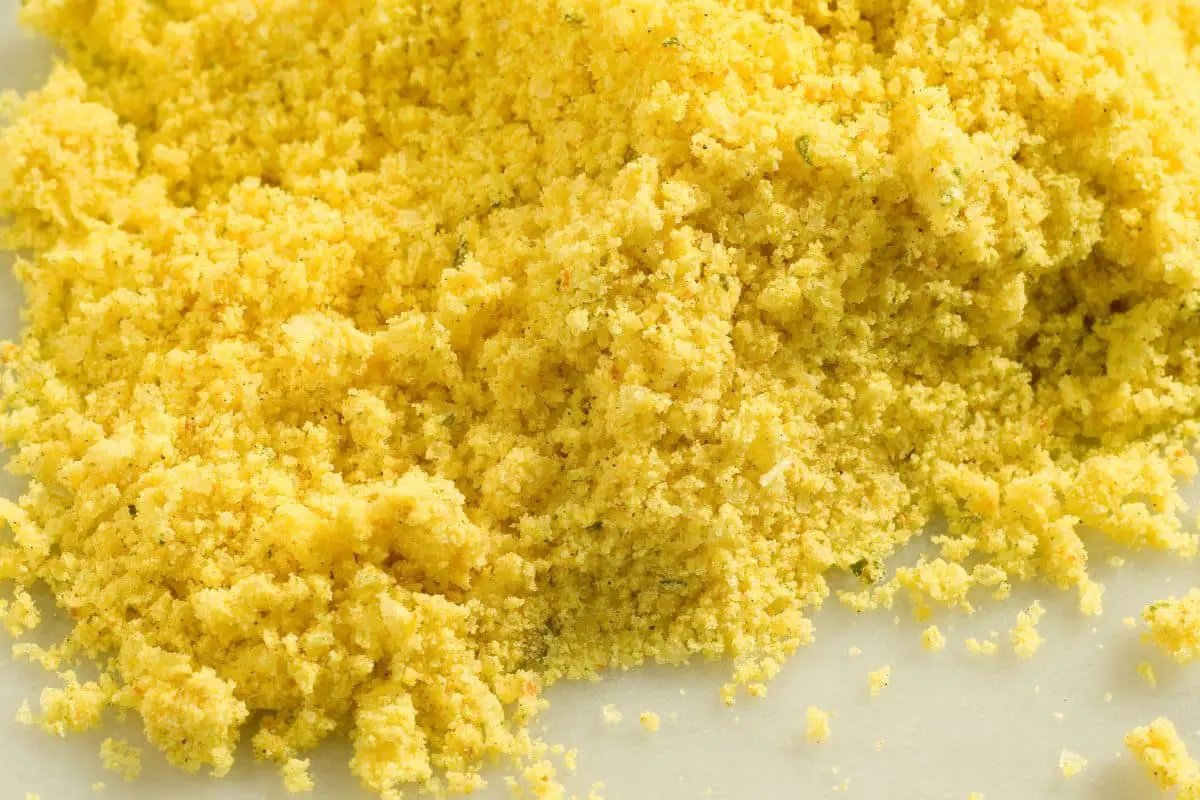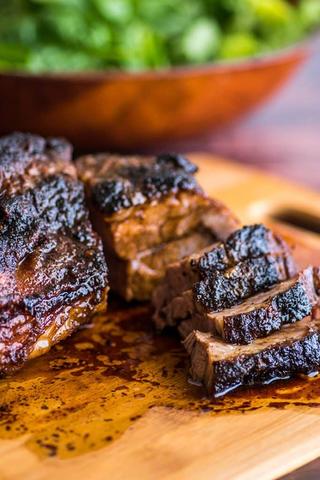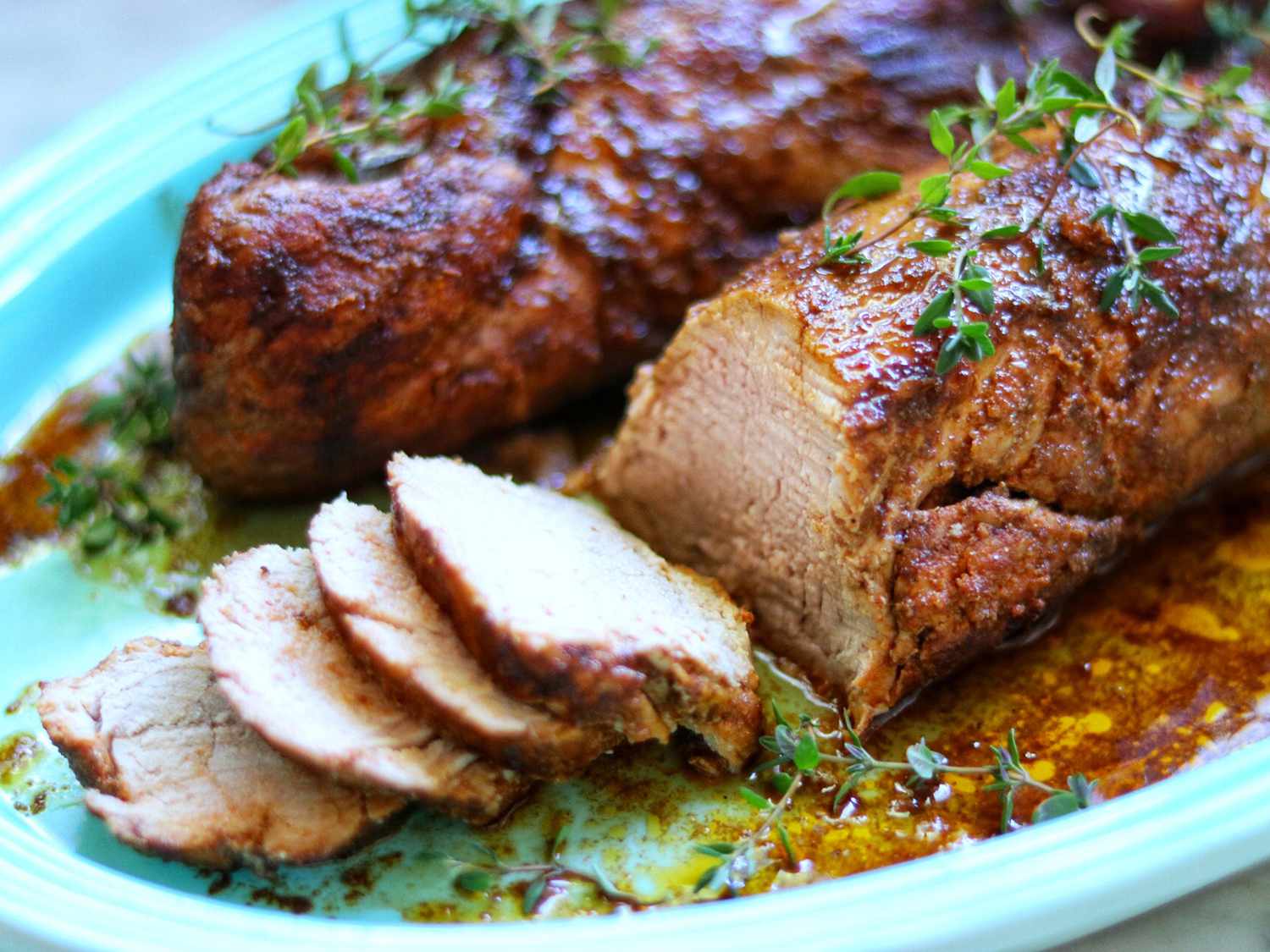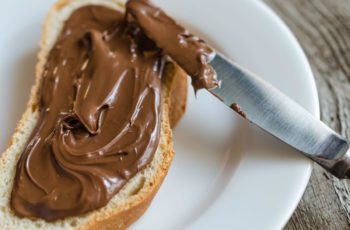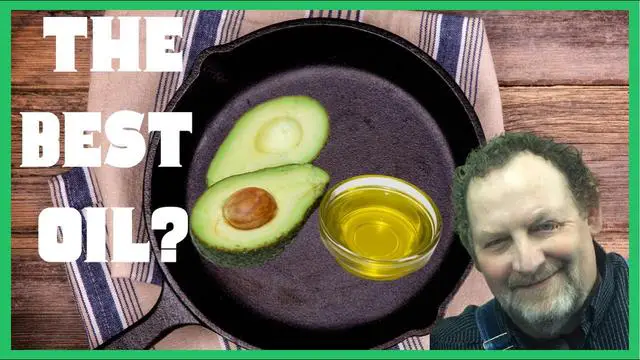
Discover the Perfect Pairing: Avocado Oil & Cast Iron. Unleash the incredible benefits of avocado oil on your cast iron cookware. From superior seasoning to healthier cooking, this dynamic duo delivers unmatched results. Elevate your culinary game with the natural goodness of avocado oil and unlock a whole new level of flavor and performance in your kitchen.
CAN YOU USE AVOCADO OIL TO SEASON CAST IRON?

Yes, you can use avocado oil to season cast iron because it has a smoke point of over 520F, making it suitable for high-heat cooking. While avocado oil may be more expensive than other oils, it creates a light and protective layer on the cast iron, perfect for deep frying and other cooking methods. Seasoning your cast iron with avocado oil will help preserve its lifespan and prevent rusting.
To properly season your cast iron with avocado oil, follow these steps:
- Gather all the necessary tools for seasoning, including baking sheet or foil, sponge, dish soap, clean towel, and avocado oil.
- Preheat your oven to a temperature below 520F (400F recommended), and place a layer of baking sheet or foil under the pan to catch excess oil.
- Clean the pan thoroughly using a sponge and dish soap to remove any factory coating.
- Dry the pan completely using a clean towel and heat it for a few minutes to remove any moisture.
- Spread one tablespoon of avocado oil across the pan using a fabric or paper towel, ensuring all surfaces are covered but avoiding excess oil.
- Bake the pan upside down in the preheated oven for at least one hour to allow the oil to bond with the material.
- Turn off the oven but leave the pan inside for an additional half an hour or more before removing it to cool down.
- If desired, repeat steps 4-7 five to seven times for a stronger seasoning.
- Once cooled down, your cast iron is ready for use, and the seasoning process will help prevent rusting and improve the taste of your dishes.
STEP-BY-STEP GUIDE TO SEASON CAST IRON WITH AVOCADO OIL
Step 1: Gather all the tools you will need for seasoning, including a cast iron pan or griddle, avocado oil, a baking sheet or foil, a sponge and dish soap, a clean towel, and an oven.
Step 2: Preheat your oven to a temperature below the smoke point of avocado oil (520F), such as 400F or 450F. Place a layer of baking sheet or foil under the pan inside the oven to catch any excess oil.
Step 3: Thoroughly clean the cast iron pan or griddle with a sponge and dish soap to remove any factory coating.
Step 4: Dry the pan using a clean towel and heat it for a few minutes to remove any remaining moisture.
Step 5: Take one tablespoon of avocado oil and spread it across the pan using a fabric or paper towel, making sure to cover all surfaces.
Step 6: Bake the cast iron pan in the preheated oven upside down for at least one hour. This will help bond the avocado oil with the material and prevent stickiness.
Step 7: After one hour of baking, turn off the oven but leave the pan inside for another half hour or more to cool down. Opening the oven door can help speed up cooling.
Step 8 (optional): Repeat steps five to seven five to seven times if you want a tougher seasoning on your cast iron pan or griddle.
Step 9: Once cooled down, your seasoned cast iron tool is ready to use for cooking. Avocado oil seasoning creates a protective barrier that prevents rusting and imparts a buttery flavor to food.
Step 10: Avocado oil seasoning lasts longer than other oil types, requiring reseasoning only once or twice a year compared to more frequent reseasoning with other oils.
GATHER WHAT YOU NEED
To begin the seasoning process, gather all the necessary tools and materials. You will need:
– Cast iron pan or griddle
– Avocado oil
– Baking sheet or foil
– Sponge and dish soap
– Clean towel
– Fabric or paper towel
Preheat your oven to a temperature below 520F, ideally around 400F. You can go up to 450F if desired, but be aware that some smoke may occur at this point. Place a layer of baking sheet or foil under the pan inside the oven to catch any excess oil.
Thoroughly clean the cast iron pan using a sponge and dish soap to remove any factory coating. Rinse well and dry with a clean towel, making sure to remove all moisture from the surface.
Heat the dry pan for a few minutes to ensure there are no water droplets remaining. Then, take one tablespoon of avocado oil and spread it evenly across the pan using a fabric or paper towel. Be sure to cover all surfaces including the sides, handles, and bottom.
Place the oiled cast iron pan upside down in the preheated oven and let it bake for at least one hour. This high heat will help bond the oil with the material, preventing it from becoming sticky after cooking.
After baking for one hour, turn off the oven but leave the pan inside for an additional half hour or more to cool. This step helps prevent thermal damage and warping of the cast iron tool. If desired, you can repeat these steps five to seven times for a stronger seasoning.
Once the pan has cooled down, it is ready to use for cooking. The avocado oil seasoning will provide a protective barrier against rust and enhance the flavor of your dishes. With proper care, your cast iron tool can last for many years without needing frequent reseasoning.
PREHEAT THE OVEN
The first step in seasoning your cast iron with avocado oil is to preheat your oven. Set the temperature below the smoke point of the oil, around 400F to 450F. Place a layer of baking sheet or foil under the pan inside the oven to catch any excess oil drippings.
Before seasoning, thoroughly clean the cast iron pan to remove any factory coating. Use a sponge and dish soap to clean the pan, then dry it using a clean towel. Heat the pan for a few minutes to ensure it is completely dry.
Take one tablespoon of avocado oil and spread it evenly across the pan using a fabric or paper towel. Make sure to cover all surfaces, including sides, handles, and bottom. Avoid applying too much oil as excess oil can have an opposite effect on seasoning.
Bake the cast iron pan upside down in the preheated oven for at least one hour. This step helps bond the oil with the material and prevents stickiness after cooking. After one hour, turn off the oven but leave the pan inside for another half hour or more to cool down.
You can repeat the seasoning process five to seven times if you want a tougher seasoning layer. This is optional but can provide additional protection against rusting and improve longevity.
Once cooled down, your cast iron pan is ready for use. Seasoning with avocado oil creates a protective barrier that prevents rusting and imparts a buttery flavor to your dishes. With proper care, your seasoned cast iron can last for years without frequent reseasoning.
ADD BAKING SHEET
To prevent excess oil from dripping and making a mess in your oven, place a layer of baking sheet or foil under the cast iron pan before preheating it.
Before seasoning, thoroughly clean the cast iron pan to remove any factory coating. Use a sponge and dish soap to clean the pan, then dry it with a clean towel.
After drying the pan, heat it for a few minutes to ensure there are no lingering water droplets. This step is crucial for effective seasoning.
Take one tablespoon of avocado oil and spread it evenly across the entire surface of the pan using a fabric or paper towel. Be sure to cover all sides, handles, and the bottom. Avoid using too much oil as excess can have an opposite effect on the seasoning.
Place the oiled cast iron pan upside down in a preheated oven set at 400F (or up to 450F if desired). Let the pan bake in the oven for at least one hour. This high heat will help bond the oil with the material and create a non-stick surface.
After baking for one hour, turn off the oven but leave the cast iron pan inside. Allow it to cool down for at least half an hour before removing from the oven. This will prevent thermal damage and warping of the pan.
If desired, you can repeat steps three through five five to seven times for a stronger seasoning. However, this is optional and not necessary if you’re short on time.
Once the cast iron pan has cooled down, it is ready to be used for cooking. The avocado oil seasoning will provide a protective barrier against rusting and enhance the flavor of your dishes.
CLEAN THE PAN
Before seasoning your cast iron pan with avocado oil, it is important to clean it thoroughly. Use a sponge and dish soap to remove any factory coating that may be present on the pan. Rinse the pan thoroughly and dry it using a clean towel. Make sure to heat the pan for a few minutes after drying to remove any remaining moisture.
USE A TOWEL TO DRY THE PAN
After cleaning the cast iron pan thoroughly, it is important to dry it completely. Use a clean towel to remove any moisture from the surface of the pan. This step ensures that there are no water droplets left, which can interfere with the seasoning process.
Once the pan is dry, take one tablespoon of avocado oil and spread it evenly across the entire surface of the pan. Use a fabric or paper towel to ensure that all areas of the pan, including the sides, handles, and bottom, are covered with a thin layer of oil. Avoid using too much oil as excess oil can have a negative effect on the seasoning.
After applying avocado oil, it is necessary to bake the cast iron pan in the oven. Place the pan upside down in an oven preheated to 400F (or up to 450F if desired). Make sure to place a layer of baking sheet or foil under the pan to catch any excess oil drippings. Bake the pan for at least one hour to allow the high heat to break down and bond the oil with the material.
After baking for one hour, turn off the oven but leave the cast iron pan inside for another half an hour or more. This will allow the item to cool down slowly and prevent thermal damage or warping. You may open the oven door slightly to facilitate faster cooling.
If desired, you can repeat these steps five to seven times for a tougher seasoning on your cast iron pan. However, this step is optional and not necessary if you are short on time.
Once the pan has cooled down completely, it is ready to be used for cooking. The seasoning process creates a protective barrier that prevents rusting and improves the taste of your dishes. With proper care, your cast iron pan seasoned with avocado oil can last for many years without the need for frequent reseasoning.
APPLY THE AVOCADO OIL
To season your cast iron, start by gathering all the necessary tools: avocado oil, a clean towel, baking sheet or foil, sponge and dish soap.
Preheat your oven to 400F or 450F if desired. Place a layer of baking sheet or foil under the pan to catch any excess oil.
Clean the pan thoroughly using a sponge and dish soap to remove any factory coating. Dry the pan using a clean towel and heat it for a few minutes to remove any remaining moisture.
Take one tablespoon of avocado oil and spread it evenly across the pan using a fabric or paper towel. Be sure not to use too much oil as excess can have an opposite effect on the seasoning.
Bake the cast iron pan upside down in the preheated oven for at least one hour. This will allow the high oven heat to break down the oil and bond it with the material, preventing stickiness and ensuring optimal cooking results.
After baking, turn off the oven but leave the pan inside for half an hour or more to cool. Opening the oven door can help speed up this process and prevent thermal damage or warping of the tool.
If desired, you can repeat these steps five to seven times for a tougher seasoning. However, this is optional and not necessary if time is limited.
Once cooled, your cast iron tool is ready to be used for cooking. The seasoning process creates a protective barrier that prevents rusting and enhances both taste and aroma of food cooked in it.
Avocado oil seasoning forms a strong bond with the material, requiring reseasoning only once or twice per year compared to other oils which may require more frequent maintenance.
BAKE THE PAN
To season your cast iron pan with avocado oil, the first step is to preheat your oven to a temperature below 520F (the smoke point of the oil). We recommend preheating to 400F or 450F. Place a layer of baking sheet or foil under the pan inside the oven to catch any excess oil.
Clean the pan thoroughly using a sponge and dish soap to remove any factory coating. Dry the pan with a clean towel, ensuring that all moisture is removed. Heat the pan for a few minutes to ensure it is completely dry.
Spread one tablespoon of avocado oil across the entire surface of the pan using a fabric or paper towel. Be sure to cover all sides, handles, and bottom, but avoid using too much oil as excess can have an opposite effect on seasoning.
Bake the cast iron pan upside down in the preheated oven for at least one hour. This step is crucial as it helps break down the oil and bond it with the material, preventing stickiness and ensuring optimal cooking performance.
After one hour, turn off the oven but leave the pan inside for an additional half hour or more to cool. Opening the oven door can expedite cooling. Once completely cool, you can use your seasoned cast iron pan for cooking immediately.
If desired, you can repeat these steps five to seven times for a tougher seasoning. However, this is optional and not necessary if you don’t have time.
LET THE TOOL COOL
After baking for one hour, turn off the oven and let the cast iron tool sit in the oven for at least half an hour. This will allow it to cool down slowly and prevent thermal damage. You can also open the oven door to speed up the cooling process. By letting the tool cool properly, you can avoid warping and ensure its longevity.
If you want a tougher seasoning on your cast iron tool, you can repeat the earlier steps five to seven times. This is optional, so if you don’t have time for it, there’s no need to worry. However, repeating the seasoning process will create a stronger barrier and enhance the durability of your tool.
Once the cast iron tool has cooled down completely, you can start using it for cooking right away. The seasoning process may take some time, but it is worth the effort. Seasoning creates a protective barrier that prevents rusting and improves the lifespan of your tool. Additionally, avocado oil seasoning imparts a buttery flavor and pleasant aroma to your food, enhancing its taste.
Seasoning with avocado oil offers several benefits compared to other oil types. Avocado oil has a high smoke point of over 520F, making it ideal for deep frying and high-heat cooking. It creates a light yet protective layer on the cast iron surface, ensuring long-lasting durability. While avocado oil may be more expensive than other oils, its superior qualities make it an excellent choice for seasoning cast iron.
Seasoning your cast iron tool is necessary to prevent rusting caused by the reaction of oxygen and water with the iron. The seasoning process forms a protective barrier that prevents this reaction, extending the lifespan of your tool. Additionally, seasoning with avocado oil imparts a better taste and aroma to your dishes. Avocado oil seasoning creates a tough barrier that lasts longer, reducing the frequency of reseasoning compared to other oils.
In conclusion, you can use avocado oil to season cast iron due to its high smoke point and ability to create a durable protective layer. By following the step-by-step guide and allowing the tool to cool properly after baking, you can achieve a strong seasoning barrier that enhances the longevity of your cast iron skillet, griddle, or pan. Avocado oil seasoning not only prevents rusting but also improves the taste and aroma of your food.
WHY DO YOU NEED TO SEASON CAST IRON?
Seasoning cast iron is necessary to create a protective layer that prevents rusting and extends the lifespan of the tool. When water comes into contact with cast iron, it reacts with oxygen in the air, leading to rust formation. By seasoning the cast iron, you create a barrier that prevents this reaction from occurring, keeping your tool rust-free.
In addition to preventing rust, seasoning also improves the taste of food cooked in cast iron. Avocado oil imparts a buttery flavor to dishes and adds a pleasant aroma. Seasoning with avocado oil takes time, but it forms a strong bond with the material, resulting in a durable and long-lasting seasoning. Cast iron pans seasoned with avocado oil only need to be reseasoned once or twice a year, saving time in the long run compared to other oils.
BENEFITS OF AVOCADO OIL FOR SEASONING CAST IRON
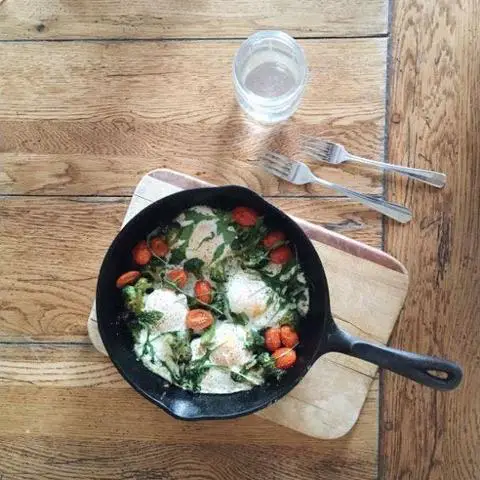
Avocado oil is an excellent choice for seasoning cast iron due to its high smoke point of over 520F, which makes it perfect for deep frying and high-heat cooking. It creates a light yet protective layer on the cast iron surface, ensuring durability and longevity of the cookware.
Additionally, avocado oil imparts a buttery flavor to food, enhancing the taste of dishes cooked in seasoned cast iron. The pleasant aroma of the oil further adds to the overall culinary experience.
Furthermore, seasoning with avocado oil forms a strong bond with the cast iron material, creating a tough barrier that prevents rusting. This eliminates the need for frequent reseasoning, as compared to using other types of oils. With avocado oil seasoning, cast iron pans only require reseasoning once or twice a year, saving time and effort in the long run.
ENHANCES TASTE
Avocado oil seasoning not only creates a protective layer on your cast iron, but it also enhances the taste of your dishes. The oil imparts a buttery flavor to the food, making it more delicious. Additionally, the pleasant aroma of avocado oil adds another dimension to the overall dining experience. By using avocado oil for seasoning, you can elevate the taste of your meals and enjoy a culinary delight every time you cook with your seasoned cast iron tool.
Seasoning your cast iron with avocado oil provides long-lasting protection against rust and corrosion. Cast iron tools are prone to rusting due to iron inclusion and exposure to water. However, by following the step-by-step guide mentioned above, you can create a strong barrier that prevents oxygen and water from reacting with the metal surface. This ensures that your cast iron tool remains rust-free and maintains its durability over time. With proper seasoning using avocado oil, you can extend the lifespan of your cast iron skillet, grill, or griddle and enjoy its benefits for years to come.
While seasoning with avocado oil may take some time initially, it offers significant time-saving benefits in the long run. Compared to other oil types used for seasoning, avocado oil forms a stronger bond with the cast iron material. This means that you’ll need to reseason your cast iron tool less frequently – only once or twice a year – compared to more frequent reseasoning required with other oils. By choosing avocado oil for seasoning, you can save valuable time and effort in maintaining and preserving your cast iron cookware while still enjoying its many advantages.
In conclusion, using avocado oil to season your cast iron is not only possible but also highly beneficial. The high smoke point of avocado oil makes it suitable for high-heat cooking and deep frying. By following the step-by-step guide provided, you can create a durable and protective layer on your cast iron tool that will enhance its longevity and improve the taste of your dishes. Consider avocado oil as your go-to option for seasoning cast iron and enjoy the many advantages it brings to your cooking experience.
BETTER STABILITY
Using avocado oil to season cast iron provides better stability compared to other oils. Avocado oil has a high smoke point of over 520F, which ensures that the seasoning layer will not break down easily during high-heat cooking or deep frying. This creates a durable barrier that protects the cast iron surface from rusting and extends the lifespan of your cookware.
Seasoning with avocado oil not only provides protection but also enhances the flavor of your dishes. The oil imparts a buttery taste to the food, resulting in a more enjoyable dining experience. Additionally, the pleasant aroma of avocado oil adds to the overall sensory appeal of your cooked meals.
The slow seasoning process with avocado oil forms a strong bond between the oil and the cast iron material. This results in a tough barrier that withstands regular use and minimizes wear and tear. Unlike other oils that require frequent reseasoning, cast iron pans seasoned with avocado oil only need to be reseasoned once or twice a year, saving you time and effort in the long run.
In conclusion, using avocado oil to season cast iron is an excellent choice due to its high smoke point, enhanced flavor, and long-lasting seasoning properties. By following the step-by-step guide provided, you can ensure proper seasoning of your cast iron cookware and enjoy its benefits for years to come.
FINAL WORDS
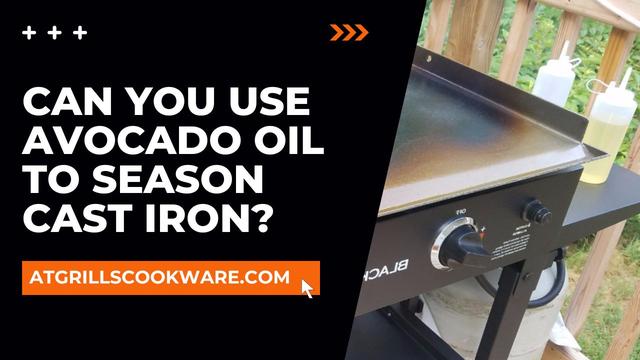
In conclusion, avocado oil is an excellent choice for seasoning cast iron due to its high smoke point and ability to create a protective layer. While it may be more expensive than other oils, the benefits it provides in terms of durability and taste make it worth the investment. By following the step-by-step guide provided, you can ensure that your cast iron pan or griddle is properly seasoned and protected from rusting. With proper care and maintenance, your seasoned cast iron tool will last for years and provide you with deliciously cooked meals. So don’t hesitate to give avocado oil a try when seasoning your cast iron!
In conclusion, avocado oil is a fantastic choice for seasoning and maintaining cast iron cookware. Its high smoke point, natural non-stick properties, and ability to withstand high temperatures make it an ideal option. Regularly applying avocado oil to your cast iron will help protect the surface, prevent rusting, and enhance the quality of your cooking.
Learn More About Grilling
If you want to learn more about grilling, check out these other helpful resources!


